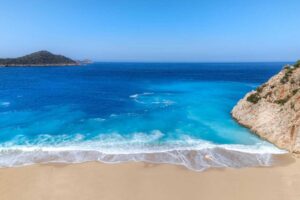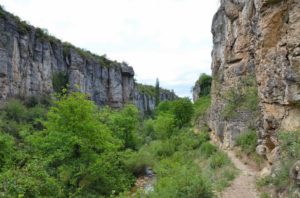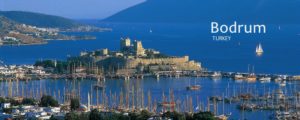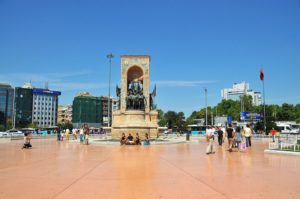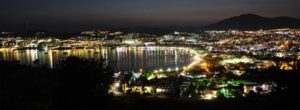One of the most prominent and respected towers of the Bodrum Castle ensemble is the French Tower. This tower stands at a blistering 47.5 meters tall. It’s intimidating in appearance when you approach it and it’s full of rich history. Designed and built by Philibert De Naillac who was regarded as the Grand Master of the Order of the Knight of St. John of Rhodes, you can find his display of arms printed on the tower walls. Also, along with Philibert De Naillac, you can find the Pope and King of France’s arms emblazoned along the wall as well.
The main attraction of the French Tower of Bodrum Castle though is the Tektas Shipwreck. There’s an exhibition that was discovered late in 1996 by divers in the Institute of Nautical Archaeology (INA for short). This ship was discovered during a routine inventory shipwreck examination when the divers were looking for evidence off of the coast of Cesme Peninsula. The site wasn’t excavated until 2001 and is one of the more recent finds in archaeological history regarding the Bodrum castle.
Recent Articles
This excavation was actually sponsored by the National Geographic Society because of its size and its importance to the historical nature of the castle. INA and TINA (which is the Turkish version of the INA) performed this excavation together to uncover artifacts and historical finds. It’s believed that the wreck dates back to the 5th century of BC. During this time, we also believe that Herodotus had travelled around and documented his histories of his travels. It wasn’t until 2004 that all of the finds from this shipwreck went into the exhibit.
One of the most fascinating finds of this wreck was that there’s over 200 amphoras found in this wreck that were in perfect or excellent condition. The majority of the amphoras found are on display here. Also, while no actual anchor was found, you can find a detailed replica of the anchor found in the exhibit as well. Also, there was some marble discs that were discovered during the excavation and while their exact purpose isn’t known, according to Professor George bass who lead the excavation said that he believes they were put on the ship to protect it.
These discs were believed to be the “Eye of Achilles” to some people and would help protect the ship during lengthy travel sessions. You can find the discs in the exhibit but the discs are shown in a separate area away from the artifacts found in the main excavation. There were a lot of miscellaneous items found in the shipwreck as well. Divers found everything from tools, fishing gear, hunting gear, bones, pots, clay and kitchen utensils.
There are some artifacts on display at this exhibit that are believed to be artifacts being carried from Teos and the ancient harbor of Sigacik. While their exact location and destination isn’t known, it is known that these goods were often carried from port to port from one ancient city to the next. When you visit the exhibition, you’ll notice a rather large display of photographs that show the work that was done during the excavation and all of the ancient artifacts that were found.

